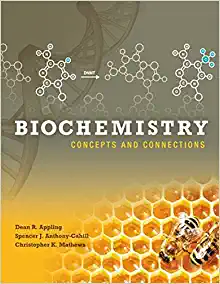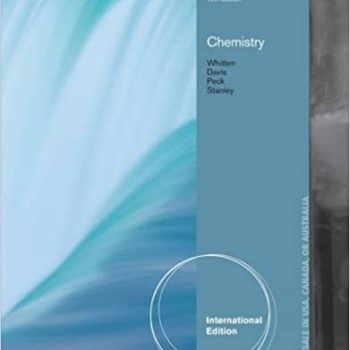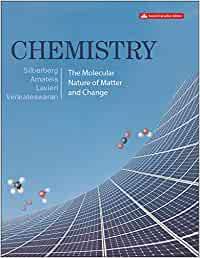Test Bank For Organic Chemistry A Short Course 13Th Edition By Hart
ISBN-10: 1111425566, ISBN-13: 978-1111425562
Chapter 1 — Bonding and Isomerism
MULTIPLE CHOICE
- What is the most electropositive element?
| A) | Li |
| B) | Be |
| C) | B |
| D) | C |
| E) | N |
ANS: A TOP: Valence, Bonding, and Lewis Structures
- Which of the following elements has three electrons in the valence (outer) shell?
| A) | C |
| B) | B |
| C) | S |
| D) | F |
| E) | N |
ANS: B TOP: Valence, Bonding, and Lewis Structures
- Which of the following would you expect to have ionic bonds?
| A) | HBr |
| B) | CO |
| C) | ICl |
| D) | CsF |
| E) | NF3 |
ANS: D TOP: Valence, Bonding, and Lewis Structures
- Which of the following would you expect to have polar covalent bonds?
| A) | MgF2 |
| B) | N2 |
| C) | F2 |
| D) | NF3 |
| E) | NaF |
ANS: D TOP: Valence, Bonding, and Lewis Structures
- Which molecule has nonpolar covalent bonds?
| A) | NO |
| B) | N2 |
| C) | BCl3 |
| D) | HF |
| E) | CCl4 |
ANS: B TOP: Valence, Bonding, and Lewis Structures
- The number of electrons in the valence shell of sulfur is:
| A) | 2 |
| B) | 3 |
| C) | 4 |
| D) | 5 |
| E) | 6 |
ANS: E TOP: Valence, Bonding, and Lewis Structures
- Which of the following elements is the most electronegative?
| A) | O |
| B) | S |
| C) | Se |
| D) | Te |
| E) | Po |
ANS: A TOP: Valence, Bonding, and Lewis Structures
- If the Cl–Cl bond length is 1.98Å and the C–C bond length is 1.54Å, what would you expect the bond length of Cl–C to be?
| A) | 0.74Å |
| B) | 1.54Å |
| C) | 1.76Å |
| D) | 1.98Å |
| E) | 3.52Å |
ANS: C TOP: Valence, Bonding, and Lewis Structures
- Given the following electronegativity values, predict the most polar covalent bond below:
| F | 4.0 |
| Cl | 3.0 |
| O | 3.5 |
| C | 2.5 |
| H | 2.1 |
| A) | –F |
| B) | C–Cl |
| C) | C–O |
| D) | C–H |
| E) | C–C |
ANS: A TOP: Valence, Bonding, and Lewis Structures
- The most electronegative elements in the periodic table are generally found
| A) | toward the left in a horizontal row and toward the top in a column. |
| B) | toward the right in a horizontal row and toward the top in a column. |
| C) | toward the left in a horizontal row and toward the bottom in a column. |
| D) | toward the right in a horizontal row and toward the bottom in a column. |
| E) | distributed randomly throughout the table. |
ANS: B TOP: Valence, Bonding, and Lewis Structures
- Which of the following Lewis Structures for ozone (O3) is incorrect?
| A) | |
| B) | |
| C) | |
| D) | structures (A) and (B) are incorrect |
| E) | none of the above structures are incorrect |
ANS: C TOP: Valence, Bonding, and Lewis Structures
- Which of the following molecules are structural isomers?
| A) | 1, 2, and 4 |
| B) | 1, 2, and 3 |
| C) | 1, 3, and 4 |
| D) | 2, 3, and 4 |
| E) | 3 and 4 |
ANS: B TOP: Valence, Bonding, and Lewis Structures
- Which of the following abbreviated structural formulas is NOT an isomer of the others?
| A) | |
| B) | |
| C) | |
| D) | |
| E) |
ANS: D TOP: Valence, Bonding, and Lewis Structures
- The number of possible acyclic hydrocarbons with the molecular formula C4H6 is
| A) | 2 |
| B) | 3 |
| C) | 4 |
| D) | 5 |
| E) | 6 |
ANS: C TOP: Valence, Bonding, and Lewis Structures
- Which of the following structural formulas represents a structural isomer of CH3CH2CH2CH2CH3?
| A) | |
| B) | |
| C) | |
| D) | |
| E) |
ANS: D TOP: Valence, Bonding, and Lewis Structures








Reviews
There are no reviews yet.